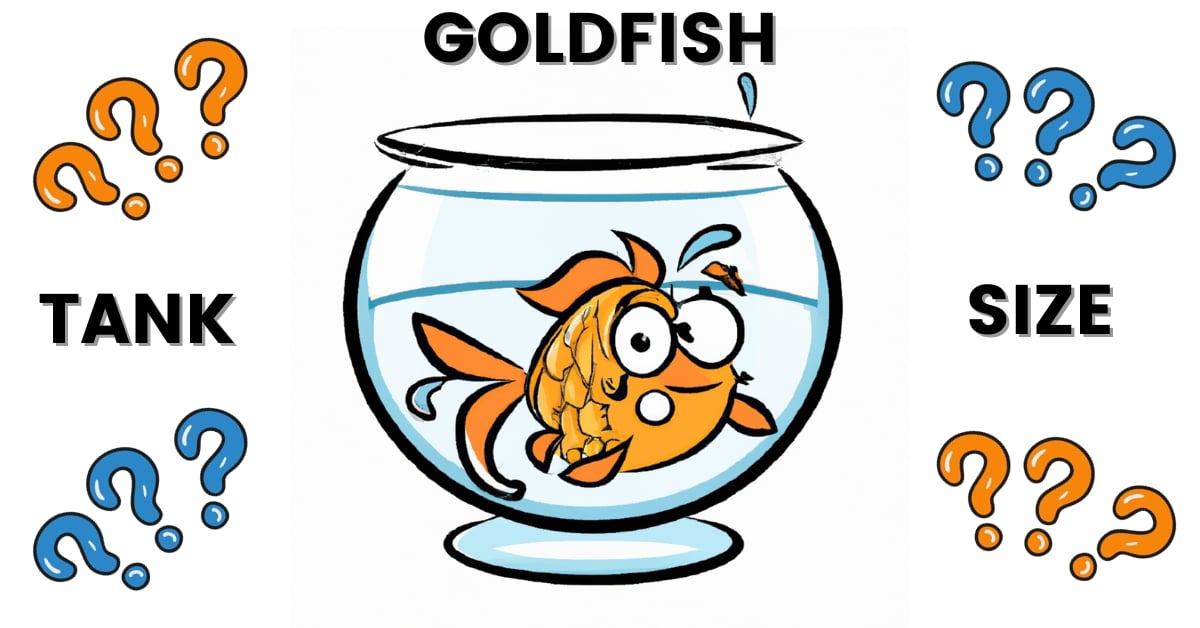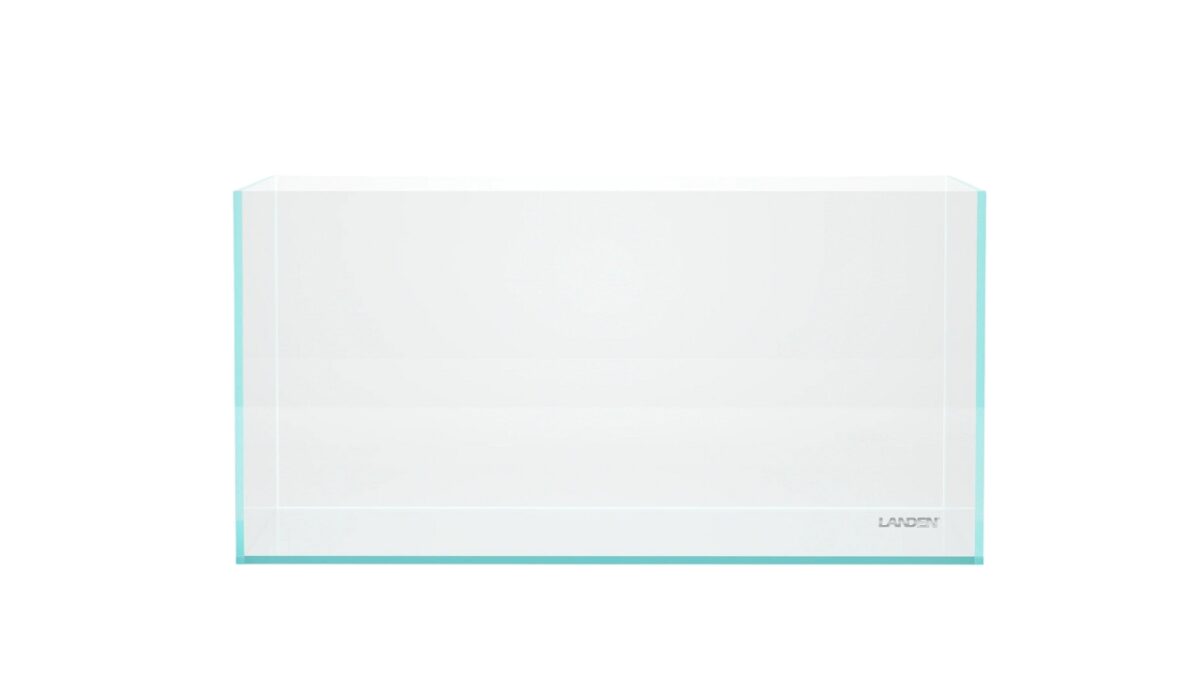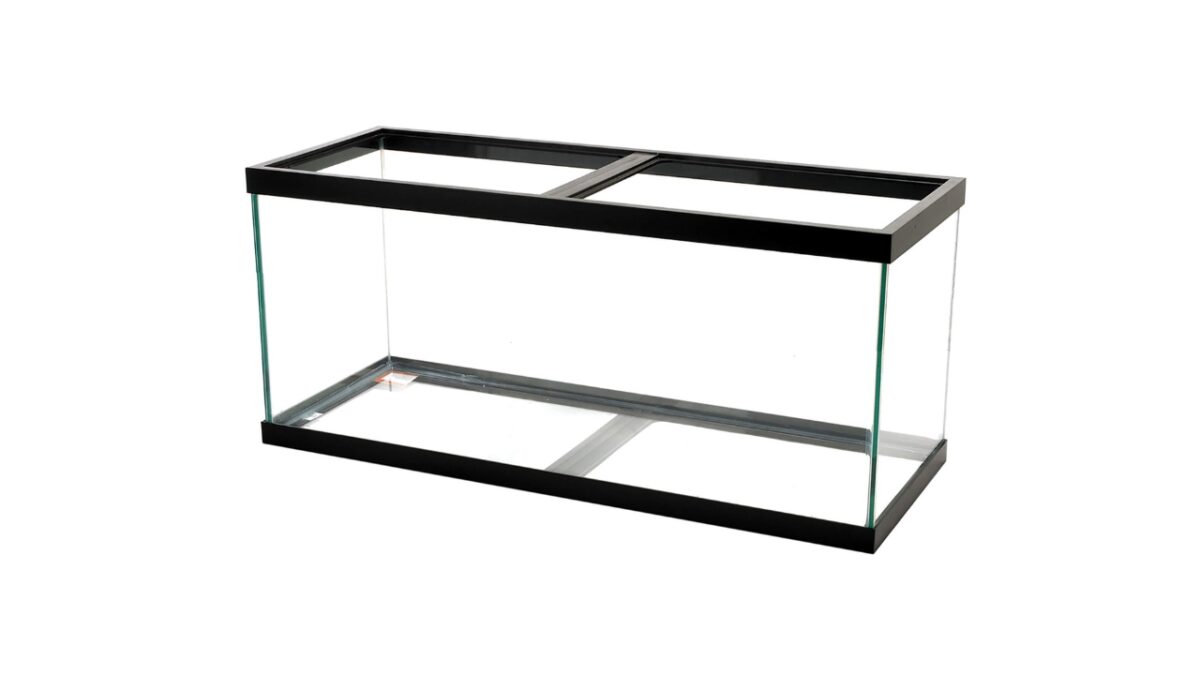
Difference Between Single Tail & Fancy Goldfish
There are many types of goldfish, but they can be divided into 2 distinct categories:
- Single tail goldfish
- Fancy goldfish
Single Tail Goldfish
Single-tail goldfish are known for, you guessed it, their single, elongated tail fin. This type includes varieties like the common goldfish and comet goldfish.
You’ll often see them in ponds and outdoor water features. They grow to be quite long, with some reaching over a foot in length.
Because of their body shape, they are highly active and need a larger tank or pond.
Fancy Goldfish
These charming fish sport many unique features, such as a double-tail fin, googly eyes, and wens. This appearance gives them a rather fancy look, hence their name.
Fancy goldfish come in a variety of shapes, but they generally have shorter, rounder bodies compared to single-tail goldfish.
They don’t grow as long, growing up to around 8 inches, and are a lot slower swimming.
Goldfish Tank Size & Shape
Tank Size
It’s best to start with an understocked tank and gradually add more fish.
To keep things simple, I’ve created the tank size chart below as a beginner’s guide:
| TYPE OF GOLDFISH | TANK SIZE |
| Small Fancy Goldfish | 20 gallons plus 10 gallons per additional fish |
| Large Fancy Goldfish | 29 gallons plus 10 gallons per additional fish |
| Single Tail Goldfish | 40-75+ gallons plus 12 gallons per additional fish |
Tank Shape
A wide shallow tank, such as a 40-gallon breeder, is much better than a tall skinny tank because it gives them much more space to swim and maneuver.
Despite what you will have seen on TV and in films, you should not keep a goldfish in a small bowl.
Recommended Tanks
Here are some tanks I recommend to provide your goldfish with a home they can thrive in.
Oceanic Systems 20 Gallon Aquarium
- Brand: Oceanic Systems
- Capacity: 20 Gallons
- Size: L 30.25″ x W 12.5″ x H 12.75″
- Suitable for: 1 small fancy goldfish
Tetra 29 Gallon Aquarium
- Brand: Tetra
- Capacity: 29 Gallons
- Size: L 30″ x W 12″ x H 18″
- Suitable for: 1 large fancy or 2 small fancy goldfish
Landen 44 Gallon Rimless Low Iron Aquarium
- Brand: Landen
- Capacity: 44 Gallons
- Size: L 35.4″ x W 17.7″ × H 17.7″
- Suitable for: 3 small fancy, 2 large fancy, or 1 common or comet goldfish
Tetra 55 Gallon Aquarium
- Brand: Tetra
- Capacity: 55 Gallons
- Size: L 48″ x W 13″ x H 20″
- Suitable for: 4 small fancy, 3 large fancy, or 2 common or comet goldfish
Aqueon 75 Gallon Standard Aquarium
- Brand: Aqueon
- Capacity: 75 Gallons
- Size: L 48.5″ x W 18.5″ x H 21.25″
- Suitable for: 6 small fancy, 5 large fancy, or 3 common or comet goldfish
Rubbermaid 150 Gallon Stock Tank (Can Be Used Outside)
- Brand: Rubbermaid
- Capacity: 150 Gallons
- Size: L 58″ x W 39″ x H 26″
- Suitable for: 12 small fancy, 10 large fancy, 6 common or comet, or 4 shubunkin goldfish
Why Are The Tank Dimensions So Important?
The size and dimensions of a goldfish tank significantly impact the well-being and overall health of your fish.
Adult Size of Fish
Goldfish grow quickly, with common goldfish and comets reaching lengths of over 1 foot, even the smaller fancy varieties can reach around 6 inches in size.
Providing a spacious tank is essential to prevent stunted growth and spinal curvature.
If you’ve found yourself with a common, comet, or shubunkin goldfish and don’t have the funds for such a large tank, the Rubbermaid stock tank above is a great more budget-friendly option, granted it doesn’t look the best, but with some reed fencing added to the outside, it could look great.
Swimming Ability
Single-tail slim-bodied goldfish can get up to speed quickly, but due to their size, they can’t turn well in a confined space.
Fancy goldfish varieties often experience difficulty swimming due to their long fins, rounded bodies, heavy headgrowth, and poor vision.
Their compacted body shapes and limited agility require a large turning circle and ample space to move around.
While they may not be fast swimmers, they still require a spacious environment to navigate and turn easily.
In car terms, a single-tail goldfish is like a Ford Mustang, great in a straight line, but not so good at cornering.
Fancy goldfish are like a 1974 Cadillac Eldorado, slow and cumbersome.
Surface Area
Goldfish require a larger surface area to facilitate sufficient oxygen exchange and water quality.
A larger tank with a greater surface area can help in preventing a buildup of waste toxins.
Goldfish are Sociable
Goldfish are naturally sociable and they thrive in groups.
I recommend keeping 3 if you have the space, having tank buddies brings out their playful side.
You have to make sure you have a big enough tank so they all have adequate room to swim in and ensure a comfortable living environment.
Bioload
The number of goldfish and their waste production directly affect the tank’s bioload, more fish = more poop.
Having a larger tank with a greater water volume helps maintain better water quality and waste management, thus reducing stress on the fish and their environment.
Before you add more fish to the aquarium, ensure your nitrogen cycle can handle the extra waste, or be prepared to get very busy with regular water changes.
Space for Decor
Decorations not only make your goldfish tank visually appealing, but they also provide hiding and resting spots for your pets. Smooth stones, glass pebbles, and resin ornaments are common additions.
A spacious tank can accommodate these decorations without compromising swimming space.
Lifespan
When provided with ample space and proper care, goldfish can live up to 10-15 years. An appropriately sized tank plays a crucial role in ensuring they have a comfortable and healthy life, ultimately increasing their lifespan.
What Do Goldfish Need In Their Aquarium?
I’ve gone over setting up a goldfish tank in much more detail in the linked post, so I’ll just do a brief overview of what you need here.
- Filter
- Dechlorinator / Water Conditioner
- Heater (depending on goldfish type)
- Substrate (optional)
- Plants (optional)
- Decor (optional)
- Lighting (optional)
- Lid (optional)
6 Ways To Tell if Your Goldfish Needs A Bigger Tank
As a responsible goldfish owner, you need to ensure your fish has enough space to grow and thrive.
How can you tell if it’s time to upgrade your goldfish tank? Here are a few signs to watch for:
1. Water Quality Issues
This is the No.1 thing to watch for.
Overcrowded tanks can lead to poor water quality, which can be detrimental to your goldfish’s health.
Frequent water changes or struggling to maintain a healthy water balance signifies that a larger tank might be necessary.
2. Struggling To Maneuver
It should go without saying that when a fish struggles to turn around or hits its tail on the tank bottom at feeding time, they need a bigger home.
3. Stunted Growth
If your goldfish seems to have stopped growing, it might be due to limited space in their current tank.
Goldfish require ample space to grow, and a cramped tank can result in stunted growth and a curved spine.
4. Decreased Activity
Observe your goldfish’s swimming habits.
If they seem less active or struggle to move comfortably around the tank, it could be an indicator that they need a larger home.
5. Constant Stress
When fish are constantly pressed for space, they tend to become more agitated and restless.
Notice if your goldfish is bumping into tank walls or objects, which might suggest they require more room to swim.
Closing Thoughts On Goldfish Tank Size
Different types of goldfish have specific tank size requirements. Single-tailed varieties like Common goldfish, Comets, and Shubunkins need larger tanks or ponds compared to fancy goldfish.
Larger tanks offer more stable water conditions, helping prevent ammonia buildup, and allowing your goldfish to grow without risking spinal curvature or other health issues.
To choose the right size of the tank, consider the type of goldfish you have and their expected adult size.
Also, think about the number of fish you plan to keep in the tank, so you buy the correct size tank to begin with, saving money in the long run.
Check out the Aquarium Health section for more guides just like this one, to keep your tank in tip-top shape.







